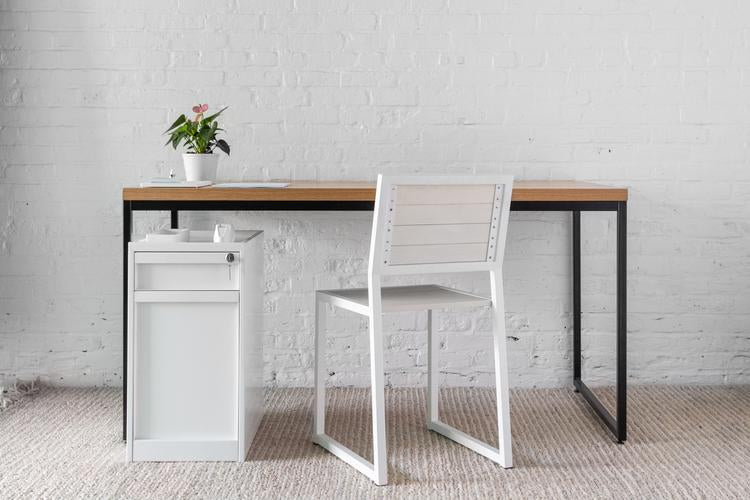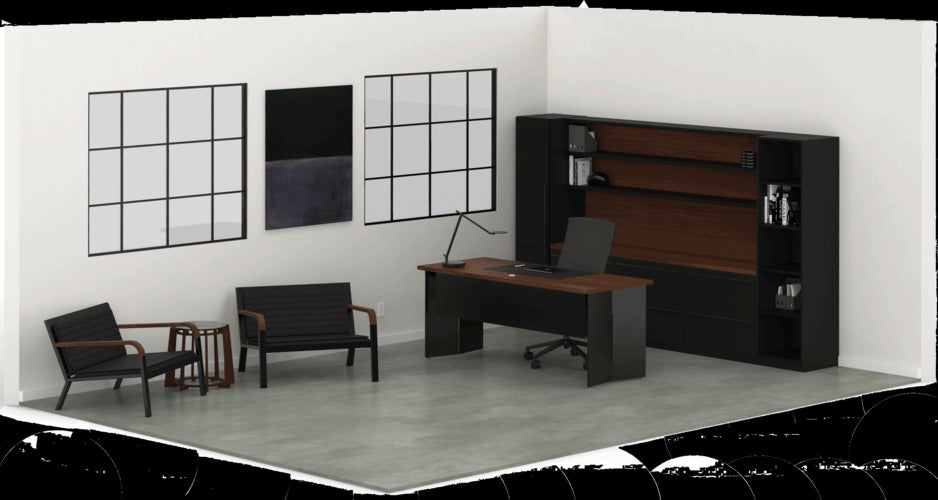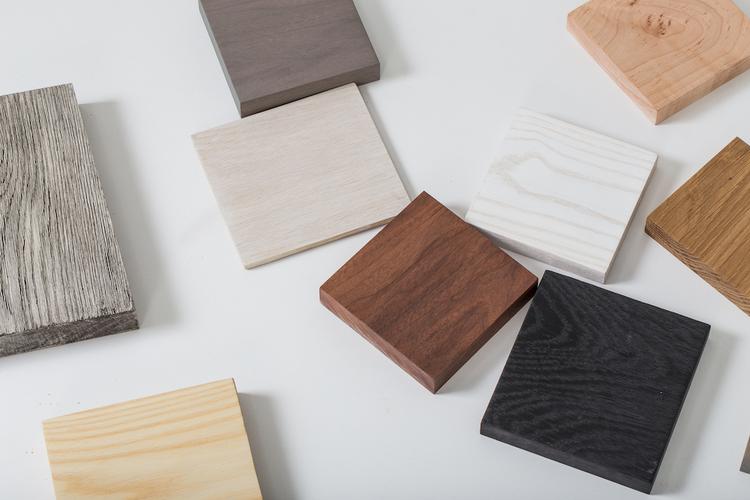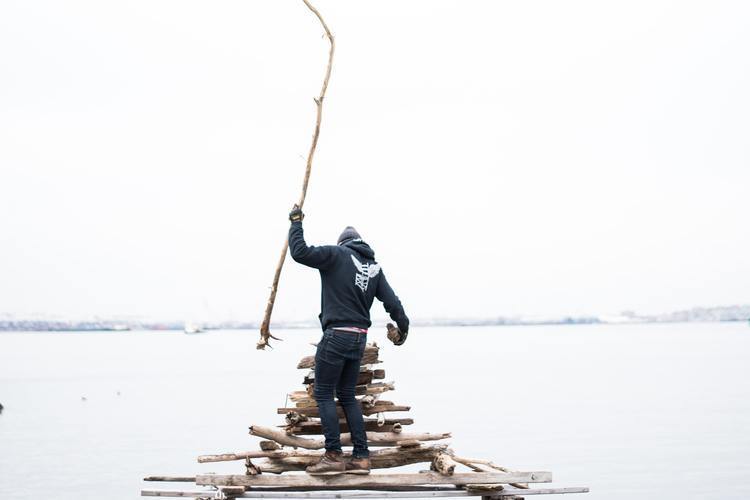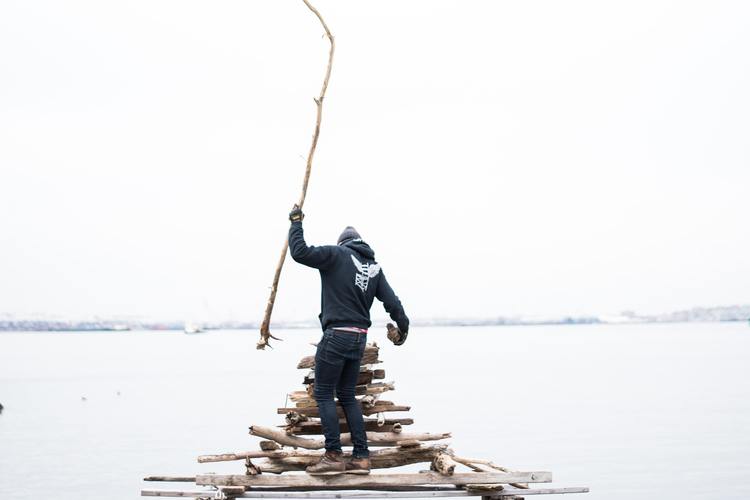INTERVIEW WITH ISAAC KRADY,
CREATIVE DIRECTOR AT UHURU
Who breathes life into our products? We’re taking you on a journey to get to know the people behind the design, construction, and creation of Uhuru products.
With over 14 years of experience as a furniture and product designer, Isaac Krady brings a passion for design, commitment, and cultural sensitivity to projects. From concept to engineering through production, Isaac worked hand in hand with co-founder Jason Horvath to design Minim Office, Uhuru's first workplace collection, which was also Uhuru’s debut into the workplace market. Minim is now in its 3rd or 4th iteration, and is at the forefront of popularizing the "resimmercial" aesthetic in the furniture space.
As a trained product designer with extensive experience in the workplace realm, Isaac is setting up the design department to work with global vendors and clients in the ever-evolving world of furniture and interiors.
Tell us a little about your background that led you to design?
Isaac Krady: I actually started out as a graphic designer and I was terrible at it. One of my teachers eventually told me, “You don't belong here, this is not for you,” and suggested I look into industrial design.
I toured schools and eventually ended up at Philadelphia Art Institute, where I stumbled on a wood shop. That’s when I realized where I needed to be. There, I got to learn all these cool techniques and about design and classic famous designers like Eames and Eero Saarinen. I became really obsessed with making bent plywood, and molds, and anything hands on for me, was what I wanted to do with my life.
When I graduated college, I moved back home. The 2008 recession hit, and I was out of work, so I found some garage sale tools, found a space, and just decided to open up my own studio. I started making not just furniture, but music equipment. I was in a band for years, so I made all of our amps, amp cabinets, and speaker cabinets. The studio ended up becoming a screen-printing place for all of our merchandise inside. We were like a big DIY-punk rock band. It was back in the days of CDs, so we had to screen print all of our CDs and package them in an assembly line.
For me, design became a big part of my life when things became hands-on. I didn’t really know what design was until I had to solve problems. At the end of the day, I realized design is really the technique to solve problems. Making things look amazing and solve a problem, it can't just be one or the other – to me it doesn't hold any old weight.
What influences your design?
Isaac Krady: My biggest inspiration doesn’t come from other designers. It comes from my conversations with people and trying to solve common issues in the workplace – at least when it comes to workplace furniture. There seems to be a trend of issues in the office, like wire management for instance. Everyone has an opinion about how they want the wires, some want no wires, some know where they want to put their wires, or what they want to charge. I hate wires and I hide them both in my own personal workspace, as well as in my designs if I can.
What’s something unique and unexpected about working for Uhuru?
Isaac Krady: There is something just so beautiful about our Uhuru prototype space in that we have some really amazing, inspirational views. Then we have the shop across hallway. At any given time, I can be working on a project, but if I need to understand the material I'm working with or if I need to mock something up, it's all right there. Having that at your fingertips really helps with our design and changes the way we design.
Everything becomes so tactile versus when we just design on the computer from home. Being hands-on changes the direction of design, I think. You can’t just design on a screen.
How are you personally challenging yourself to be more creative in a time when you’re not able to be as hands-on in your design process?
Isaac Krady: The communication between me and my team has absolutely changed. From turning around from my desk and being able to talk to my team for something that takes five minutes now takes longer. That definitely may lower morale for someone in design, but everyone is getting more excited to get back to the office eventually.
Now we talk more about “Oh, when we go back, we’re going to make THIS,” or “When people go back, they’re going to NEED this,” so now we’re designing not for this moment, but for the future. We’re asking ourselves in six, eight, ten months from now, what are people going to want, what's the vibe going to be like?
We're all stuck at home right now so I think what people will want is more residential furniture. I think everyone's going to want the same thing when they get back to their spaces, just slightly different. They're going to want to feel comfortable in their own space, even in their office. The days of packing the office like sardines are over, at least the way I see it. I don’t see cubicles coming back, but maybe something that involves flexible space division, some form of open office separation.
A lot of bids we’re seeing now have more private offices. But for the person that doesn't have their own office, what do they want? I think they want their own personal space, or at least the feeling of having their own personal space, and to feel safe.
Is there anything you’re working on right now that you’re particularly excited about?
Isaac Krady: We’re working on a conference chair right now, that’s been my little pet project. We came up with this conference table system that is a kit of parts, like an erector set. You can easily customize it. There are six leg profiles, six different top styles, and we developed a custom power unit for this system, and you can put all the parts together and create whatever table you want. It's kind of amazing. So as a natural progression, we thought, why don’t we sell the chair to go with the table. So that’s the next big thing I’ve been working on.
Tell us about your sketches.
Isaac Krady: I'm a little old school when it comes to process of design, I love mock-ups. I love playing with cardboard, I still do that for products. When I joined Uhuru and started making cardboard mockups, people in the shop would ask me what I was doing.
When it comes to sketching, I draw ALL the time. Sketching is a huge part of my process, having conversations with my creative self and trying to figure out the solution to the problem, down to small details like how things are going to snap together, screw together, how a piece of metal is going to bend, and if it might interfere with something else. I have a whole library of sketch books, and once they’re full they go on a shelf. And each project gets a whole book.
Isaac welding parts to his motorbike at the Uhuru studio.
How does your love of motorcycles fit your professional design passion?
Isaac Krady: Anything I can build; I will do it. I love motors, love loud things, and gasoline. It's my second hobby. If I wasn't designing, I would probably just restore vintage cars and motorbikes. I was never into motorcycles, because you know… death.
My friend bought his dream bike, and so he ended up giving one of his old motorbikes to me… after much persuasion. I had it for three months and brought it to New Jersey to visit my parents two miles from the beach. It was my beach motorcycle, and I’d just cruise around. It was great. And then it broke down. It was a forty-five-year-old bike, like c’mon.
So naturally I brought it to my studio and next thing I know it's in pieces and I didn’t know what to do with it. Apparently, there’s a manual for every motorcycle. Who knew?
That’s when I started to get into like the whole cafe racer culture and was also, at the time, working in this amazing metal shop. So that’s when I learned how to weld – building my motorcycle. And every time I drove this bike, I would always think, “wow, the thing didn’t fall apart”.
For me it became more about building them than about riding them. I wanted to make it more efficient, or changing this, or customizing that. I really got into the build. Which is why I’m excited about my newest motorcycle, a 1976 Honda CB550 – that I found in a barn in Pennsylvania.
Last month I joined this motorcycle collective in Red Hook, down the street from the Uhuru compound, which is where I'm going to finish building it. It’s like a motorcycle club. There are a bunch of other motorcycle builders there and enthusiasts who all know way more about motorcycles than I do.
I just like old things. There’s so much more nostalgia and personality. The same relates to products, too. Products designed and manufactured today versus products from back in the day – you just don't get the same quality today. I think that’s something Uhuru takes pride in: making beautifully-designed, solid products to last a lifetime, fabricated by makers passionate about the quality and lifetime of furniture.
Thank you Isaac and we can't wait to see what the Uhuru design department unveils!
